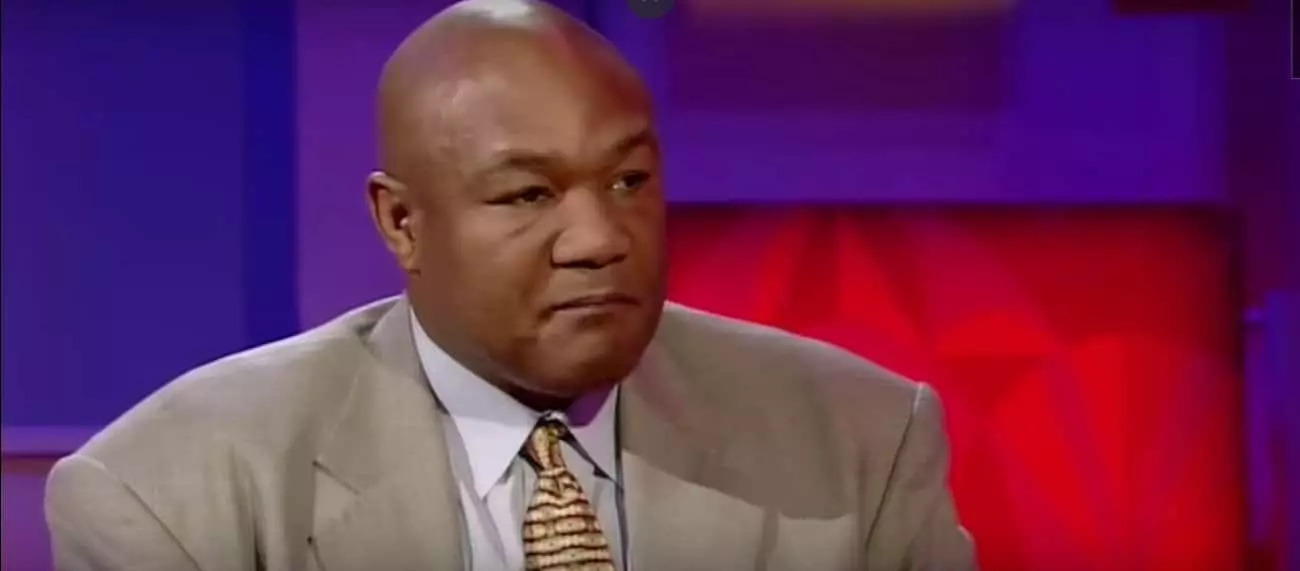Born on January 10, 1949, in Marshall, Texas, George Foreman’s journey is as multifaceted as it is inspiring. Raised in a challenging environment, Foreman was a troubled teenager before his life took a decisive turn, thanks in large part to President Lyndon Johnson’s Jobs Corps program designed to uplift underprivileged youth. Through this initiative, Foreman found himself in a boxing gym—not initially seeking fame or fortune, but merely looking to shed some pounds. It was here that legendary trainer Doc Broadus recognized the raw potential in the young man, guiding him toward a career that would forever change the landscape of boxing.
Foreman’s amateur career may have begun modestly, with a record of just 16 wins and 4 losses, but it culminated in a significant achievement when he clinched the gold medal in the heavyweight division at the 1968 Mexico Olympics. His victory was made all the more poignant by his iconic gesture of waving a small American flag while stepping onto the podium, sharply contrasting with the Black Power salute that defined moments of civil rights activism in that era. This juxtaposition of pride and struggle has since become emblematic of Foreman’s journey.
Transitioning to professional boxing, Foreman’s ascent was meteoric. He quickly made headlines as he bulldozed through the competition, culminating in a defining moment in January 1973 when he faced off against Joe Frazier. The fight, which Foreman ended in just two rounds, is etched in boxing lore as one of the most one-sided in heavyweight history. Foreman, a Goliath in the ring, appeared untouchable, a formidable champion poised for a lengthy reign. However, the boxing world is unpredictable, and Foreman soon encountered one of the sport’s greatest icons: Muhammad Ali.
The 1974 “Rumble in the Jungle” in Zaire marked a turning point in Foreman’s career. Viewed as invincible, Foreman experienced a psychological and physical defeat that would haunt him for years. The loss against Ali not only devastated him but also precipitated a dramatic ten-year hiatus from the ring—a period of deep introspection and transformation. Foreman wrestled with his identity outside of boxing, which had initially defined him as an athlete.
In 1987, Foreman made headlines once more, but for an entirely different reason. Emerging from a decade-long absence, he returned to boxing not as a lean, mean fighting machine, but as a heavier and more contemplative man. His motivation this time was deeply personal: He sought to provide for the youth in his community by revamping his Youth and Community Centre. The comeback—dubbed one of the greatest in sports—was powered by a revamped training regime and the wise counsel of boxing veterans Charlie Shipes and Archie Moore.
Foreman’s return culminated in a historic victory over Michael Moorer in 1994, earning him the heavyweight championship two decades after his original reign. This victory was not merely a sport milestone; it symbolized redemption. Foreman personified resilience, showcasing that life’s setbacks do not define one’s worth or potential.
A Global Icon Beyond the Ring
With his boxing career behind him, Foreman didn’t fade into obscurity but rather evolved into a cultural icon. He became a household name through his lucrative grilling brand, securing his financial future and leaving behind a legacy that extends beyond boxing. Even at 76, George Foreman is not just remembered as a champion in the ring but celebrated as a multifaceted individual—a philanthropist, an entrepreneur, and a testament to the power of determination and second chances.
In retrospect, George Foreman’s life is a rich tapestry woven from his profound struggles, tenacity, and significant impact on society. His evolution from a troubled youth to an Olympic champion, to an undisputed heavyweight champion, and finally a business mogul illustrates that success is not merely about victories but also about personal transformation and the unwavering spirit to rise after every fall. Today, Foreman stands as a shining example of how the journey matters as much, if not more, than the destination.


Leave a Reply